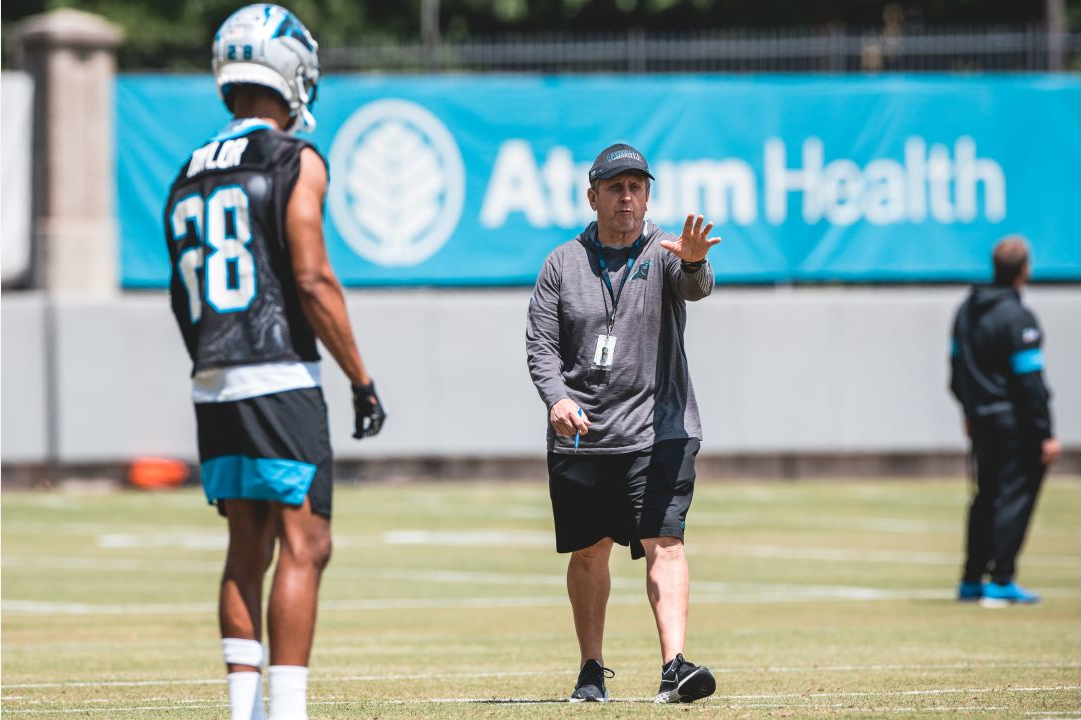When Phil Snow was named as the Panthers’ DC following the hiring of Matt Rhule it was a little unclear exactly that the Panthers’ defense was going to look like, and this was made all the more complex by the limited offseason due to COVID. What ended up taking the field was a mix between what he ran at Baylor and some more standard NFL concepts, with a lot of what they were able to do being limited as much by personnel as philosophy.
One thing that was notable about the Panthers’ defense, however, and something that Matt Rhule talked a lot about last offseason, was the ability to be in quite different defenses from the same personnel group, something which not only allowed them to create confusion for opposing offenses but also allowed them to make the most of the defensive talent they had by keeping their best players on the field for almost every snap.
However, with another offseason to supplement the talent they have on defense, the Panthers have started to build upon the foundation they laid in 2020, while the principles or versatility and multiplicity are set to continue.
“We have a couple of personnel groups that we can put on the field and be in a number of different styles of defense which gives the offense a lot of problems” said Phil Snow during OTAs. “When you bring in a personnel group, they know what front and coverages you’re in, but if you can play one group and do a number of different things it gives you a huge advantage.”
But what exactly is going to change, and how does that fit with the personnel moves the Panthers have made this offseason?
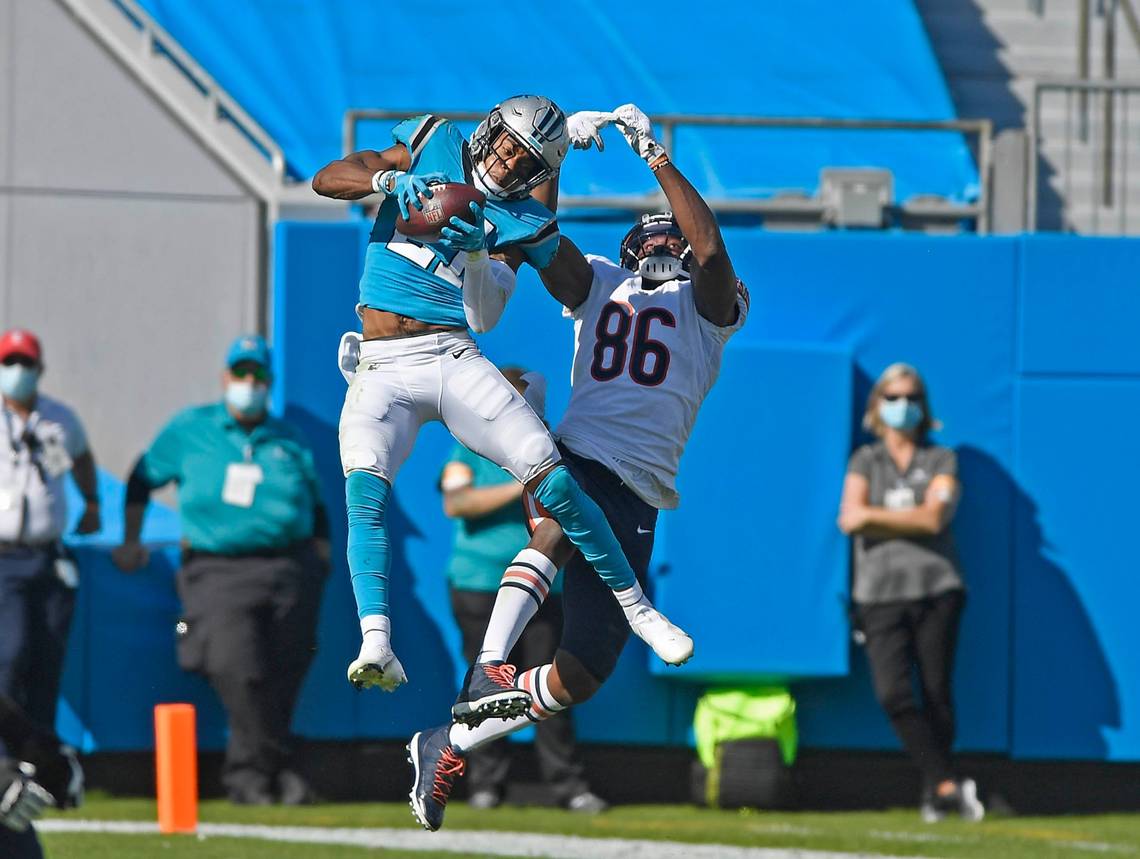
Photo Credit: David Foster/Charlotte Observer
A major factor in what allowed the Panthers to be quite so versatile last year was the way in which they used Jeremy Chinn, whose ability to play everywhere from inside linebacker to nickel to free safety allowed them to play with only one conventional linebacker (typically Shaq Thompson) around half the time. While there has been a lot of talk of Chinn moving back to a more conventional safety spot, it is clear that the Panthers’ coaches still want to make use of his versatility whatever his nominal position.
“If you’re not utilizing Jeremy in a number of different ways then you’re not utilizing the player” admitted Phil Snow. “We won’t pigeon-hole him into one position, we can maximize him by doing a lot of different things with him. You’ll see us do that again this year.”
The reason for continuing to use Chinn in this way is fairly straight-forward; if a player does something well then get him to do it as often as possible, and if a player can do a lot of things well then mix the ways in which you use him in order to force the offense to keep having to readjust.
“Having guys that can do multiple things, play different positions, any way you can slow a quarterback’s thought progression” explained Chinn. “(A defender), he might be blitzing, or he might be dropping into coverage. the more you can do the better it is for a defense.”
However, while fans should still expect to see a lot of Jeremy Chinn making plays all over the field, how he is used as part of personnel groupings forms the basis for the Panthers’ potential for defensive evolution.
“Last year we used him from the front back, I think it’s going to be a little more from the back up” explained Snow. “But a lot of the same things he can do and based on what we’re calling we’ve got to utilize him and maximize him … we’ve still got to implement a lot of the same things but just do it in a different way.”
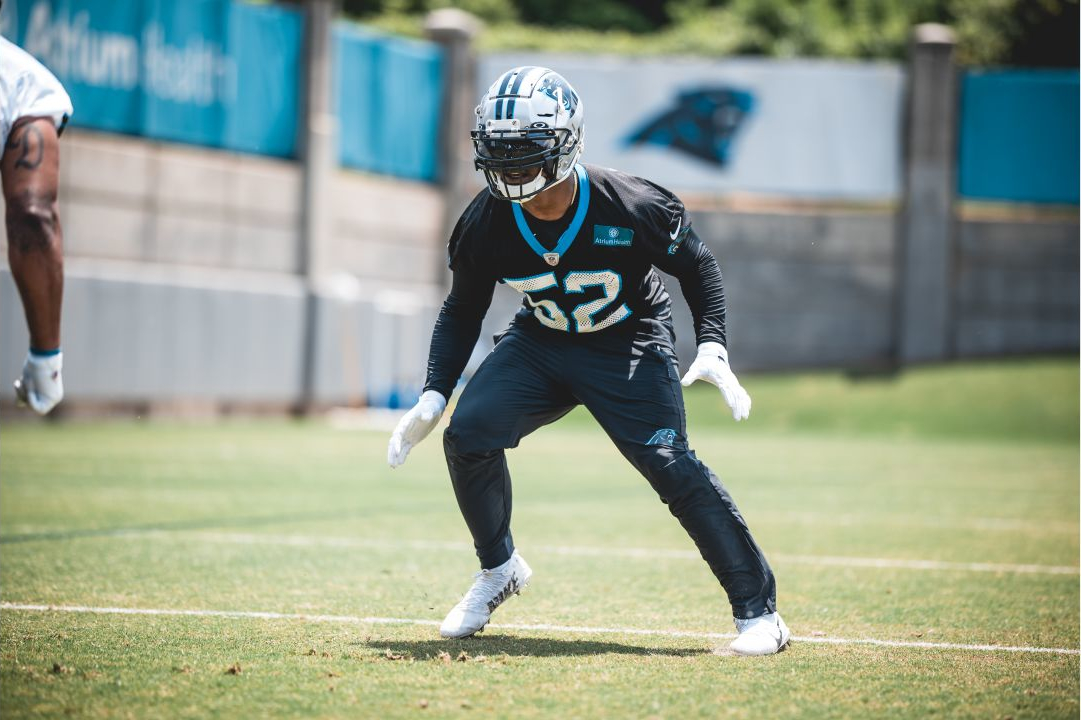
Photo Credit: Brandon Todd/Carolina Panthers
Although the Panthers had some issues with injuries in the secondary last year, they tended to keep Chinn, Thompson, Tre Boston, Juston Burris and both starting corners on the field for almost 100% of snaps, with the only routine change in personnel being to swap a third corner for a second linebacker. While the Panthers will likely continue to keep Thompson, Chinn and at least three more defensive backs on the field at all times, the different personnel groupings that Snow referred to will arise from how they use the remaining two spots.
This, in turn, will depend a lot on how the Panthers plan to make use of one of their newest free agents, Denzel Perryman. On the surface, Perryman is a direct replacement for Tahir Whitehead, who the Panthers opted not to re-sign. It is certainly true that the Panthers can use Perryman in the way they used Whitehead last year, as two-down linebacker who offers a physical presence in the box, though it should be noted that Perryman is a much better player in coverage even if he is not going to generate many turnovers of play much man-to-man.
What complicates this, however, is that Whitehead essentially lost his job to Jermaine Carter after the Detroit game, and while the Panthers did very occasionally put three true linebackers on the field in 2020, something to watch for early in the season is how the Panthers use Perryman and Carter in combination. Do they look to rotate them depending on the situation or is it a more direct competition for a role between the two?
The Panthers have also hinted at wanting to decrease Shaq Thompson’s workload slightly after he played more than 1,000 snaps a year ago (Denzel Perryman has never reached 500 snaps a season in his career by comparison). Further complicating this picture is the fact that they have asked Shaq to add weight this offseason, potentially changing how they as him to play as well.
“If you look at Shaq right now, Shaq’s put on some weight and I asked him to this offseason, he’s done a terrific job, so we’re bigger inside” explained Snow.
How the Panthers are going to use their linebackers is one of the hardest things to judge at this point in the offseason and is going to be one of the most intriguing areas to watch during training camp and the preseason.
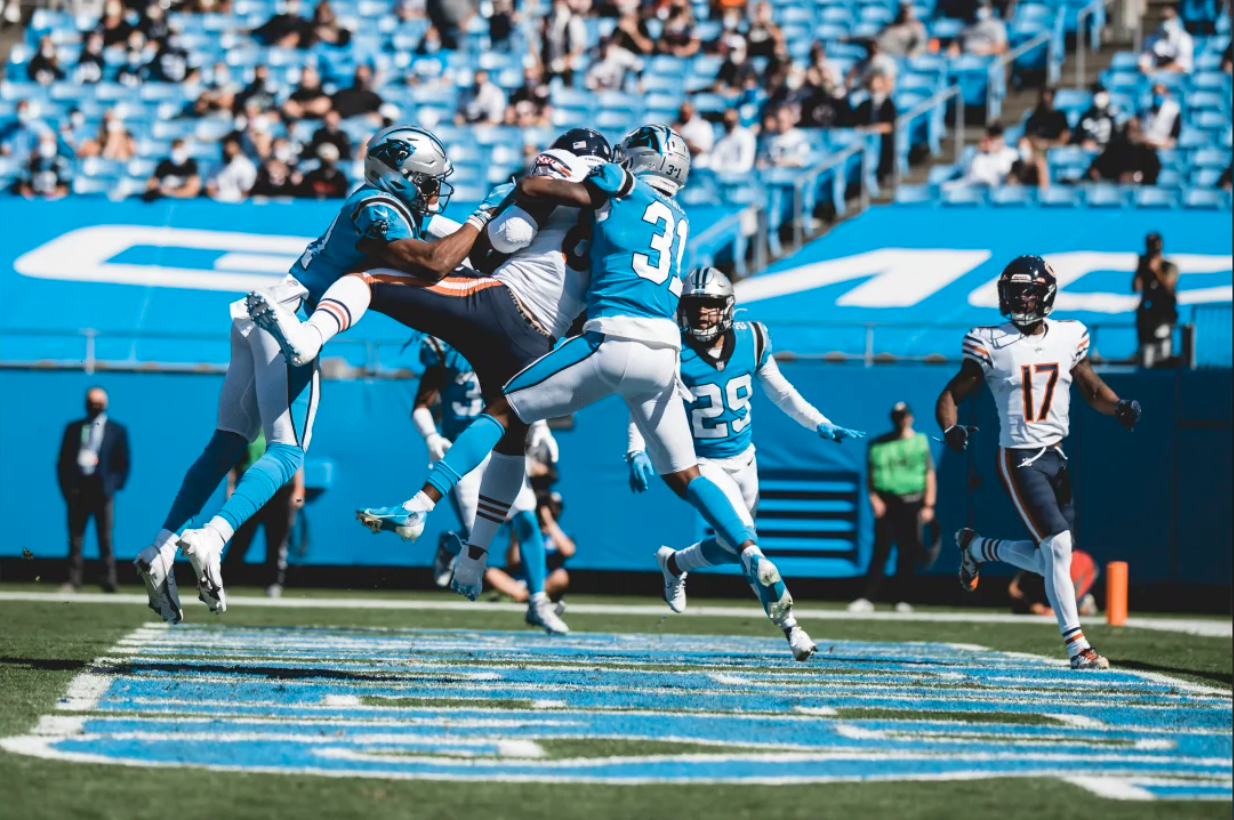
Photo Credit: Brandon Todd/Carolina Panthers
The other side of the coin in terms of how the Panthers’ use their linebackers is how they use their defensive backs. Last year, they used a safety due of Boston and Burris with Chinn flexing between safety and linebacker, but with Chinn potentially moving towards more of a safety role that creates some flexibility in how they use their other defensive backs, something that Matt Rhule is keen to build upon through training camp.
“I’d like to have more variability with our units, can we play some dime, can we play some different things so we’re using guys at safety, we’re using guys at corner, we’re cross-training some guys and hopefully just getting the best guys on the field” explained Rhule.
AJ Bouye has already talked about shifting to playing more nickel under the Panthers, but whether the Panthers keep Juston Burris as the primary safety alongside Chinn or whether they look to try and find ways to get one or more of Kenny Robinson, Sam Franklin and Myles Hartsfield onto the field is possibly the biggest unknown for the Panthers when it comes to the secondary.
The other aspect to bear in mind is that the Panthers’ coaches have made a point of wanting to play more man coverage this year, and while they are not going to switch to being an exclusively man-coverage defense, how players are able to play in man coverage is going to impact which groups they are able to put on the field at the same time. This doesn’t mean that they are going to have one set of personnel for man and another for zone, but rather that certain players being on the field might push the balance one way or another.
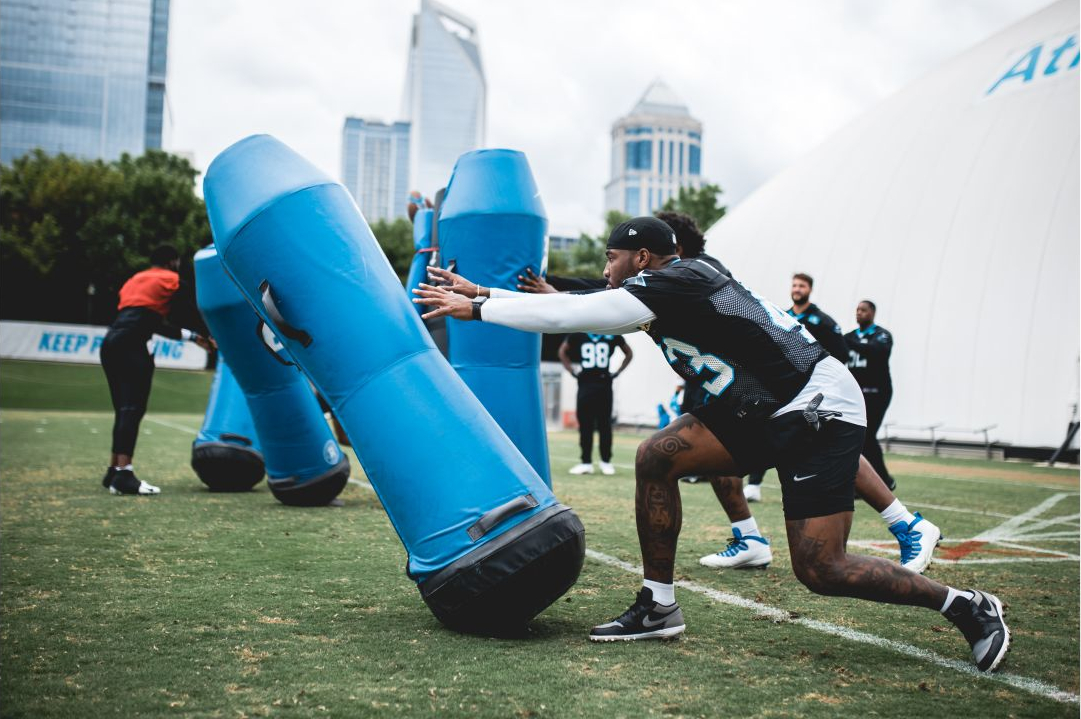
Photo Credit: Brandon Todd/Carolina Panthers
The other free agent signing that is likely to have a big impact on what the Panthers are able to defensively is Haason Reddick, as while the Panthers made use of Brian Burns’ versatility in 2020 by occasionally dropping him into coverage, having multiple players who are able to offer this level of flexibility significantly adds to the Panther’s ability to confuse an offense. Something that Snow was quick to emphasize when talking about the former Temple star.
“He’s got some unique abilities and we’ve got to utilize that, there’s some things he does really well and some things he doesn’t so I’ve got to put him in positions where he can really flourish” explained Snow. “He’s another player that can do a lot of different things. He’s another piece of the puzzle that it’s fun to play with and we’ve got another three or four guys like that in our defense.”
After the Cardinals spent three seasons trying to convert Reddick to be an off-ball linebacker, it is clear that a major factor in Reddick’s decision to sign with Carolina was that he trusted Snow to emphasis what he does best, namely rushing the quarterback, and not try and get too clever with how he’s used. However, when you have a player that has the athleticism to drop into coverage the way the Reddick does, that is something you’d be wise to incorporate into his usage, even if only occasionally.
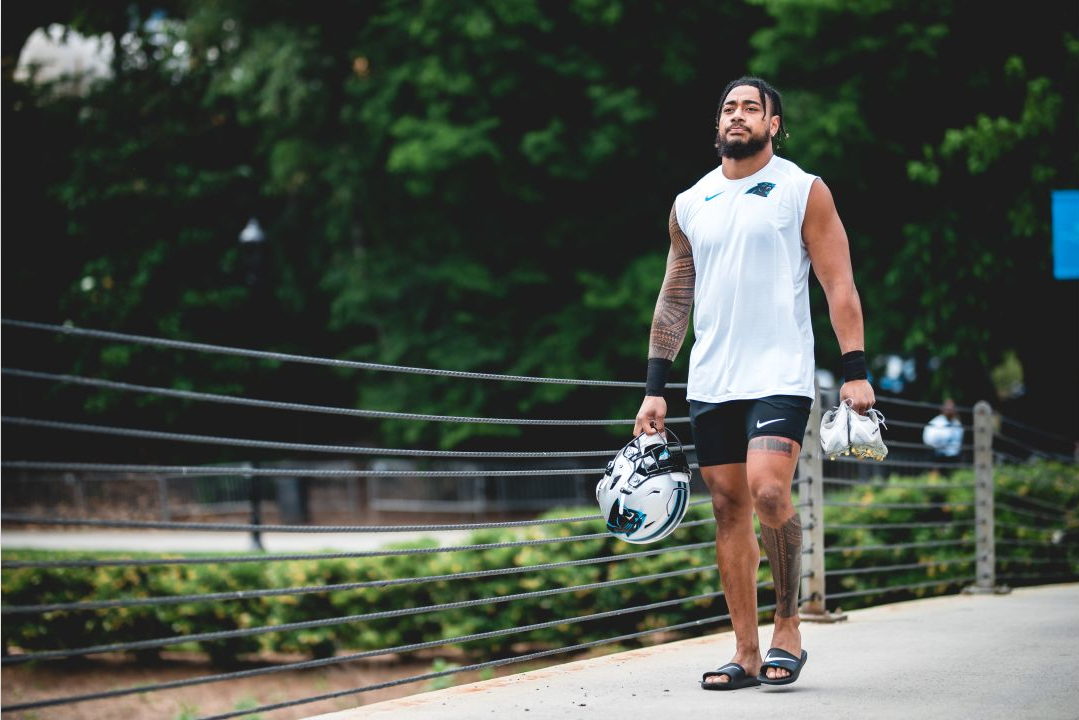
Photo Credit: Brandon Todd/Carolina Panthers
Importantly, Reddick himself sees the value that being used in different ways can bring, and while he is no doubt most eager to be able to pin his ears back and get after the quarterback on a regular basis, he understands the impact that his versatility can have on opposing offenses.
“It’s a great thing because now we’re putting a lot of strain on the offense” acknowledged Reddick. “When guys aren’t in their usual positions and now, they see a guy who usually has his hands in the dirt or usually on the line of scrimmage and now he’s off the ball, you don’t know if he’s going to be covering, you don’t know if he’s going to be blitzing and the fact that we’re going to show them everything is going to help us keep the offense guessing. I think that’s the best part about it, we’re going to cause some confusion and having guys doing things differently and making plays.”
While Reddick and Burns are the two most notable options in this regard, it is also worth noting that the Panthers have also made a point of adding depth for this role. Frankie Luvu who they signed from the Jets and who Snow and Rhule have both been quick to mention so far this offseason, has the ability to both rush the passer and drop into coverage, while both Christian Miller and Marquis Haynes have the potential to do this as well. It is not clear that all three will make the final roster, but the Panthers’ interest in incorporating versatile edge rushers into the defense is clear.
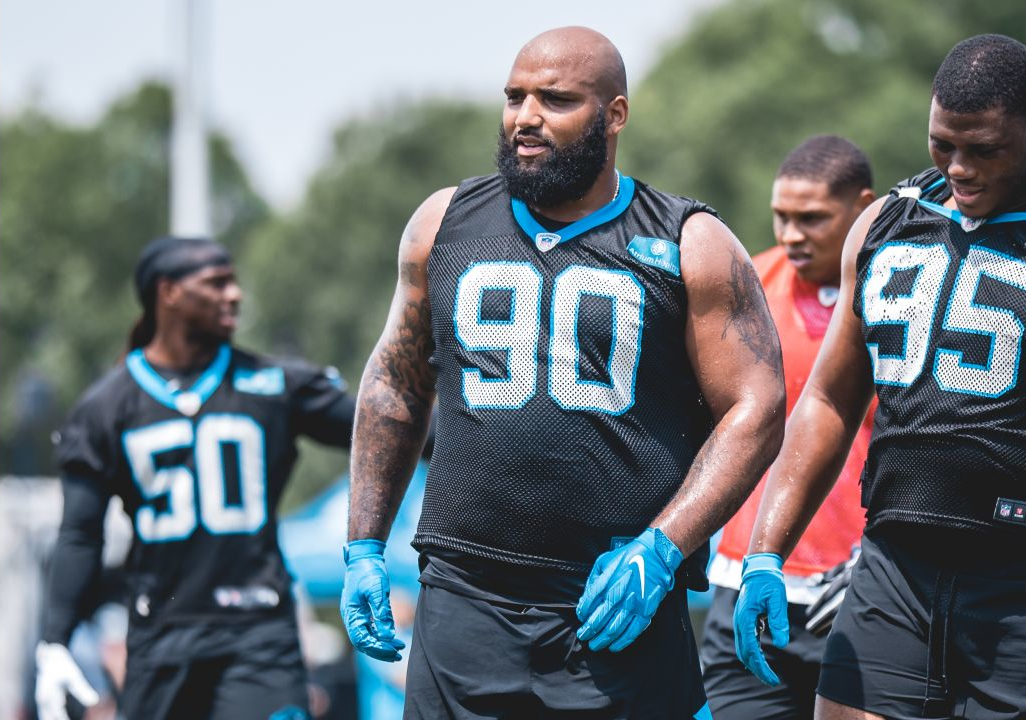
Photo Credit: Brandon Todd/Carolina Panthers
However, one potential issue when your starting edge rushers have a combined listen weight under 500lbs, especially when you plan on primarily playing a four-man front as the Panthers have insisted they do, is that you run the risk of getting pushed backwards against the run. While the Panthers do have some bigger defensive ends in Morgan Fox and Yetur Gross-Matos who will rotate in and give some greater physicality on the edges, in order to have Reddick and Burns on the field as often as possible they are going to have be sturdy inside.
“You need to be big inside, the number one running play in our league is ‘bounce’, it’s a perimeter play, and you’re going to have smaller guys out there, but you need to be big inside, and we are big inside” explained Snow. ” With (DaQuan) Jones and (Derrick) Brown and (Bravvion) Roy, we’re big inside and those smaller guys on the edges they can play; Burns, Haason Reddick, those guys, they can be really effective out there.”
It does indeed seem as though the Panthers have looked to double down on stuffing the run when it comes to their interior defensive linemen this offseason, with DaQuan Jones and Derrick Brown both being best as run stuffers (though that isn’t to say that they can’t rush the passer), with the Panthers also having added further depth in this regard with the selection of Phil Hoskins in the 7th round. Talking to The Riot Report back during OTAs, Defensive Line Coach explained the thinking behind this approach.
“I think there’s a premium on large body type men who can move and play with power in this league” explained Okam. “Outside of the elite 3-techniques like Aaron Donald type that’s very dynamic, you really need guys that collapse and push the pocket in the middle so the quarterback has to throw over the top, can’t step up and allows your edge guys to take over and do their thing. So, when you find guys I just don’t think you can ignore them, you try to get as many as you can because those are rare body types and you want those guys that can hold the point of attack.”
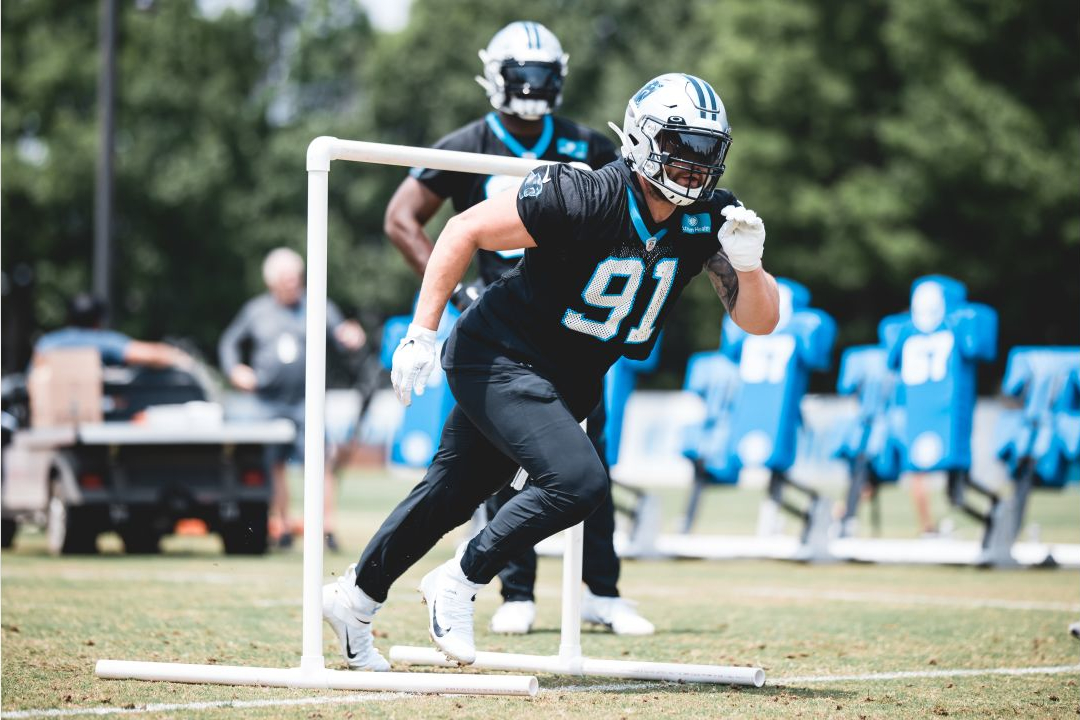
Photo Credit: Brandon Todd/Carolina Panthers
While this is all well and good, it is worth acknowledging that the Panthers really struggled for interior pass rush last year, and most of what interior pressure they did generate was the result of Efe Obada who has since departed to Buffalo in free agency. In their base defense, therefore, they are likely to be very reliant on their edge rushers to get home while the interior rushers look to eat up blocks inside but, like in 2020, they are likely to make use of specific pass rushing fronts to create pressure in obvious passing situations.
As well as being able to offer some more solidity on the edges, both Fox and Gross-Matos also offer the flexibility to move inside and play 3-tech in obvious passing situations, something that Okam also spoke to.
“Having those guys come in and have the versatility to use Morgan, inside and outside, Yetur inside and outside that that really elevates our ability to try to have a chance to get after the quarterback” explained Okam. “When you’re talking about pass rushing it’s all about matchups, and you’re trying to find the best match-ups possible and give our secondary and ‘backers the least amount of time where they’re covering.”
The Panthers have also added a more conventional 4-3 3-tech this offseason in the form of Daviyon Nixon, but while there is a lot of optimism about what the fifth-round pick can become, expecting him to be a foundational piece for the Panthers in year one seems unfair, though his selection speaks to the Panthers’ determination to have as many different skill-sets as possible that they can then combine in differing ways to force defenses to adapt both during games and the season as a whole.
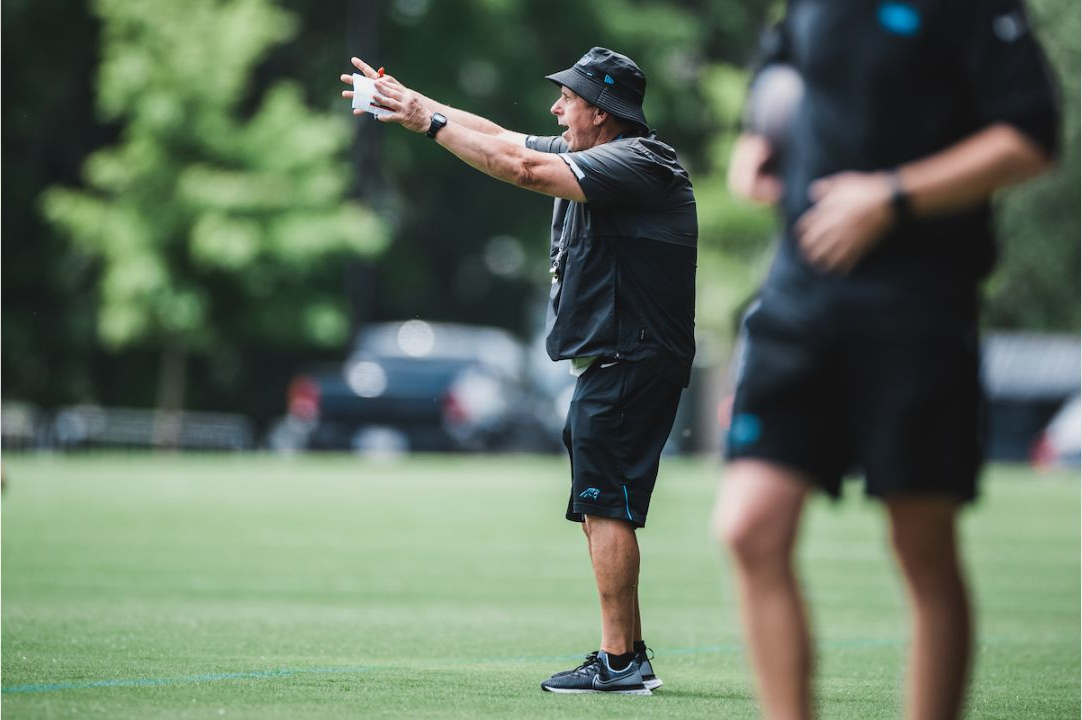
Photo Credit: Brandon Todd/Carolina Panthers
Exactly what the Panthers’ defense is going to look like will likely be a work-in-progress throughout camp, with the potential to switch between three- and four-man fronts and the variety of body types to take very different approaches up front depending on the personnel. In the secondary, they have much more depth than a season ago, and have continued to add players at all levels who maximize their schematic flexibility.
“We’ve got to utilize the talent here, so we may do some things differently than we did a year ago, and then some things that are the same” explained Snow. “My job is to maximize the players on the field, what they can and can’t do so we’ve added some stuff, we’ve thrown some stuff out. That’s the fun part of OTAs, we’re trying some things that we’re looking at to see if we’re going to use them in the fall … it’s a lot of fun, but I also have to be smart that we don’t have too much, that we don’t burden them with assignments so that they can play really fast. That’s kind of the catch-22 to it, so you’re always trying to balance that and really what balances it for me is if the player says ‘Snow, I can’t do that’ or if he’s struggling, then I have to listen.”
Exactly what the Panthers do defensively is likely to be subject to Phil Snow’s tinkering right up to the start of the season, and as they did last year it is likely to be something that evolves as the reasons goes on as he is able to try players in different roles and see how things that look good on the fields at Wofford translate to an NFL game.
This isn’t a defense that is at the very highest level just yet and there is likely to be an adjustment and development period as the new faces settle in, but having been asked to do the best his could with quite a limited talent pool in 2020, the Panthers have rewarded Phil Snow’s ability to do more with less with a significant amount of investment at all three levels this offseason, and with the greater range of options he now has a chance to show that he can do more with more as well.
(Top photo via Carolina Panthers)

